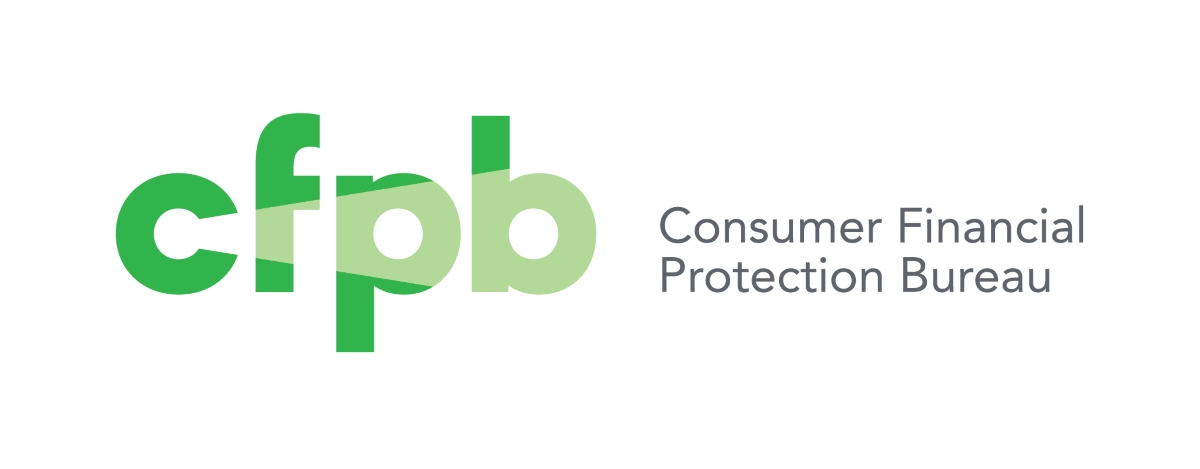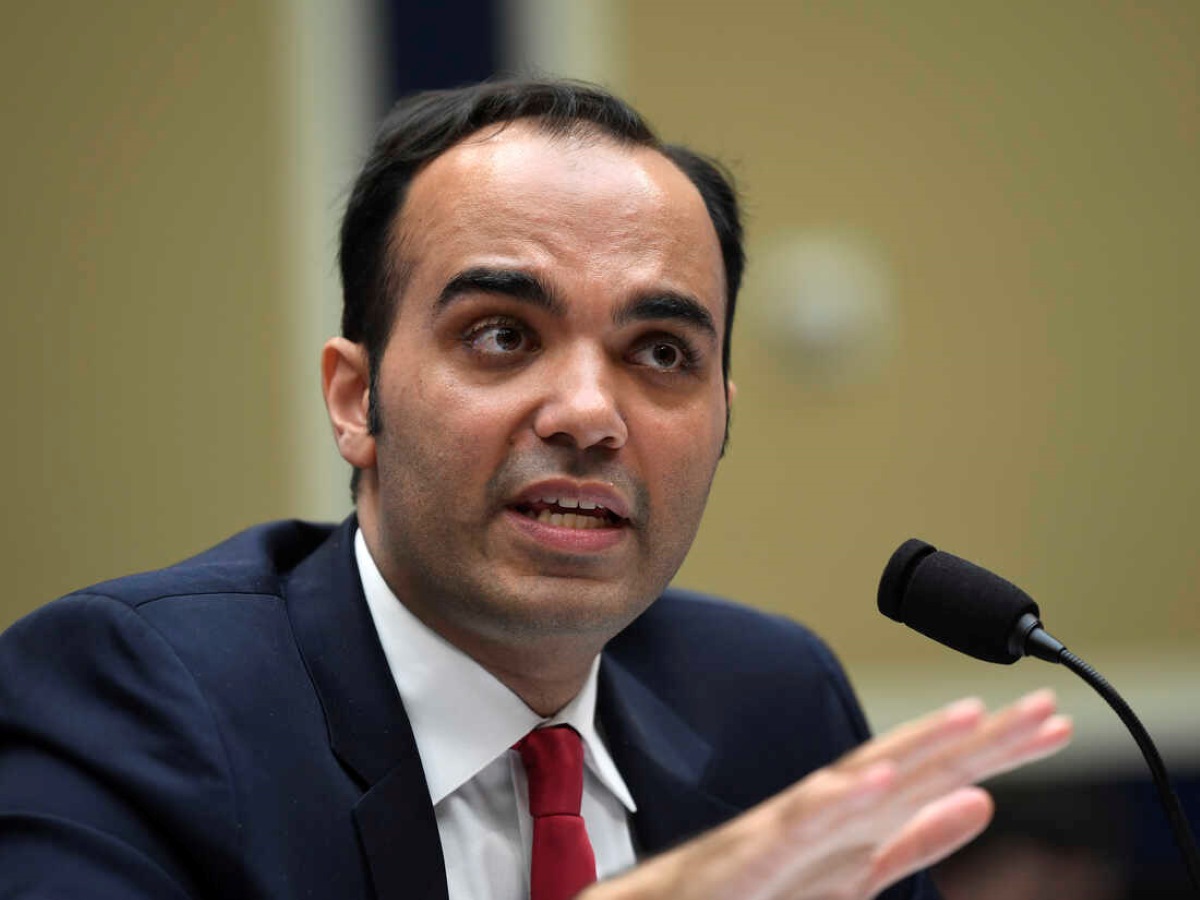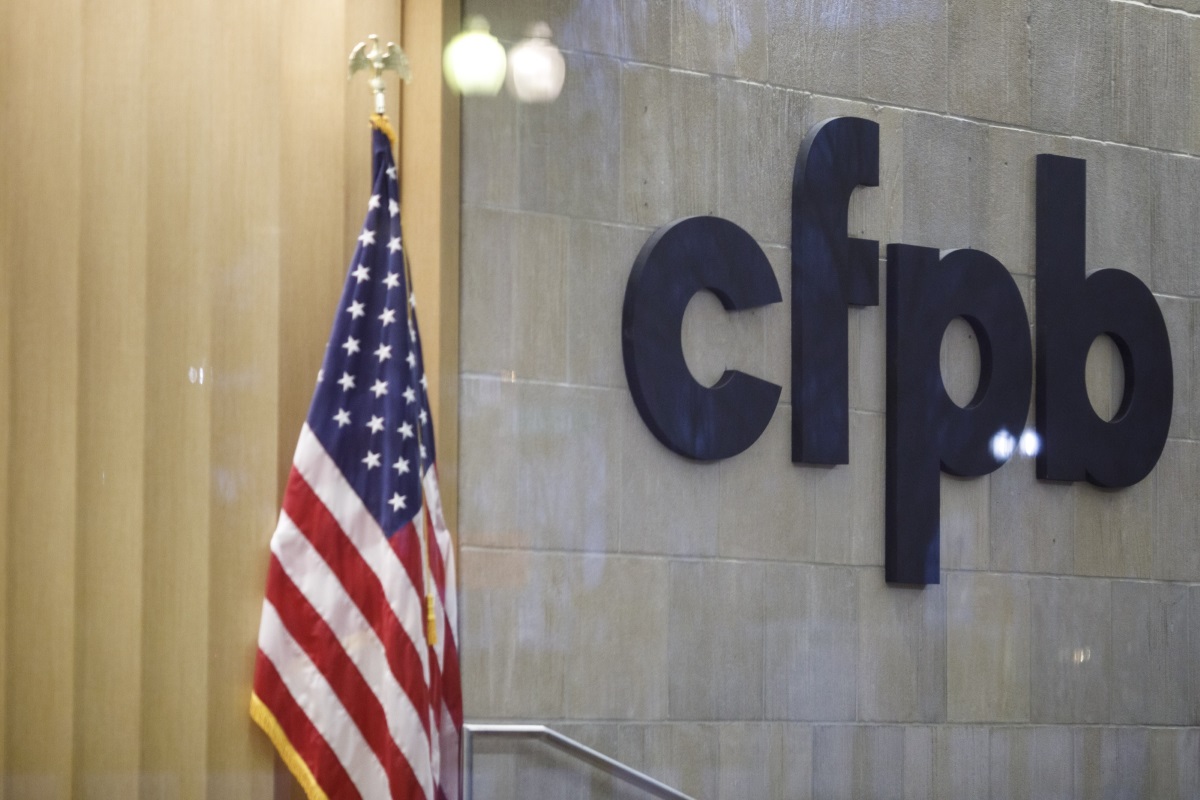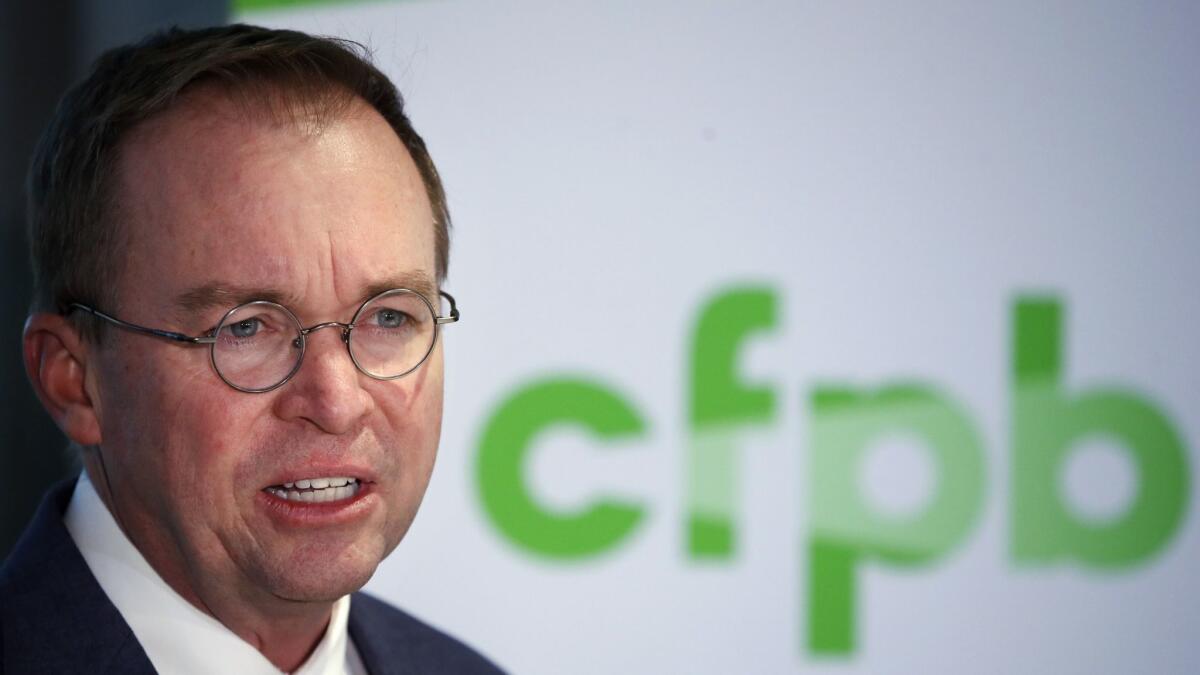Home>Finance>How Much Do Consumers Save Through The Consumer Financial Protection Bureau?


Finance
How Much Do Consumers Save Through The Consumer Financial Protection Bureau?
Modified: December 30, 2023
Find out how the Consumer Financial Protection Bureau helps consumers save money and navigate the world of finance. Learn more today!
(Many of the links in this article redirect to a specific reviewed product. Your purchase of these products through affiliate links helps to generate commission for LiveWell, at no extra cost. Learn more)
Table of Contents
- Introduction
- Methodology
- Overview of the Consumer Financial Protection Bureau (CFPB)
- Analysis of Consumer Savings through the CFPB
- Impact of the CFPB on Various Consumer Financial Products
- Case Studies: Examples of Consumer Savings through the CFPB
- Criticisms and Limitations of the CFPB’s Consumer Saving Efforts
- Conclusion
- References
Introduction
The Consumer Financial Protection Bureau (CFPB) is an agency established by the U.S. government with the goal of protecting consumers in the financial marketplace. Since its inception in 2011, the CFPB has been dedicated to promoting fairness, transparency, and accountability in consumer financial products and services.
One of the ways the CFPB aims to achieve this is by helping consumers save money. Through its enforcement actions, regulations, and educational initiatives, the CFPB seeks to level the playing field and empower consumers to make informed financial decisions.
In this article, we will explore the various methods used by the CFPB to help consumers save money, the impact of their efforts, and provide examples of consumer savings achieved through the bureau’s interventions.
However, it is important to note that the effectiveness of the CFPB’s consumer saving efforts has been a topic of debate. Critics argue that the bureau’s regulations can stifle innovation and limit access to credit, while supporters maintain that the CFPB plays a crucial role in protecting consumers from predatory practices and ensuring fair treatment in the financial industry.
By examining the data and analyzing case studies, we will paint a comprehensive picture of how much consumers save through the Consumer Financial Protection Bureau and evaluate the criticisms and limitations of its endeavors.
Ultimately, understanding the impact of the CFPB’s consumer saving efforts is crucial not only for individuals seeking to make wise financial decisions, but also for assessing the overall effectiveness of the agency and its role in promoting a more inclusive and fair financial market.
Methodology
In order to assess the impact of the Consumer Financial Protection Bureau (CFPB) on consumer savings, a comprehensive analysis was conducted. The methodology for this analysis included a review of available data, research studies, and case studies related to the CFPB’s consumer saving efforts.
First, data from the CFPB’s own reports and publications were analyzed. These reports often provide insights into the bureau’s enforcement actions, regulatory changes, and educational initiatives that directly impact consumer savings. By examining these reports, we were able to gain a better understanding of the scope and magnitude of the CFPB’s interventions in the financial marketplace.
Additionally, research studies and academic papers that have evaluated the effectiveness of the CFPB in promoting consumer savings were reviewed. These studies often utilize quantitative data analysis and statistical techniques to assess the impact of the CFPB’s actions on consumer behavior and financial outcomes. By considering the findings of these studies, we were able to gauge the overall effectiveness of the CFPB in achieving its consumer saving goals.
Furthermore, case studies were examined to provide real-life examples of consumer savings through the CFPB. These case studies highlight specific instances where the bureau’s interventions led to tangible benefits for consumers, such as reduced fees, fairer lending practices, or improved access to financial products. By analyzing these case studies, we were able to illustrate the practical impact of the CFPB’s consumer saving efforts.
It is important to note that while the analysis conducted for this article incorporates a variety of data sources, it is not exhaustive. The CFPB’s impact on consumer savings is a complex and multifaceted topic, and there may be other factors or studies that were not included in this analysis.
Despite this limitation, the methodology employed in this analysis provides a comprehensive overview of the CFPB’s consumer saving efforts and their impact on consumers in the financial marketplace. By examining the data, research studies, and case studies, we can gain valuable insights into how much consumers save through the Consumer Financial Protection Bureau.
Overview of the Consumer Financial Protection Bureau (CFPB)
The Consumer Financial Protection Bureau (CFPB) was established by the Dodd-Frank Wall Street Reform and Consumer Protection Act in 2010 as an independent agency of the United States federal government. The primary mission of the CFPB is to protect consumers in the financial marketplace and ensure fair and transparent practices by financial institutions.
The CFPB has jurisdiction over a wide range of financial products and services, including mortgages, credit cards, student loans, payday loans, and more. Its responsibilities include enforcing consumer protection laws, conducting financial education initiatives, and providing resources and tools for consumers to make informed financial decisions.
One of the core functions of the CFPB is to regulate and supervise financial institutions to ensure compliance with consumer protection laws. The bureau has the authority to issue regulations, conduct examinations, and take enforcement actions against entities that engage in unfair, deceptive, or abusive practices.
The CFPB also plays a significant role in empowering consumers by providing educational resources and tools. The bureau’s website offers a wealth of information on various financial topics, such as budgeting, credit management, and debt repayment. In addition, the CFPB has developed interactive tools and calculators that help consumers understand and compare financial products.
Furthermore, the CFPB collects and analyzes consumer complaints related to financial products and services. This data is utilized to identify trends and patterns of problematic practices in the financial industry. The bureau then uses this information to inform its enforcement priorities and provide recommendations for regulatory changes.
Through its interventions in the financial marketplace, the CFPB aims to level the playing field for consumers and promote fair and transparent practices. By enforcing consumer protection laws, providing educational resources, and monitoring the financial industry, the bureau seeks to ensure that consumers have access to products and services that are safe, transparent, and reasonably priced.
However, it is important to note that the CFPB has been a subject of controversy since its establishment. Critics argue that the bureau has too much regulatory power and can stifle innovation in the financial industry. On the other hand, supporters view the CFPB as a necessary watchdog that protects consumers from predatory practices and ensures a fair and trustworthy financial marketplace.
Overall, the Consumer Financial Protection Bureau plays a crucial role in promoting consumer protection and financial well-being. Its efforts to regulate financial institutions, educate consumers, and provide resources for informed decision-making contribute to the overall goal of empowering consumers and facilitating sustainable financial success.
Analysis of Consumer Savings through the CFPB
The Consumer Financial Protection Bureau (CFPB) has made significant efforts to assist consumers in saving money through various initiatives and interventions in the financial marketplace. By promoting fair practices, transparency, and access to information, the CFPB aims to empower consumers to make informed financial decisions that ultimately result in savings.
One of the primary ways the CFPB contributes to consumer savings is through its enforcement actions against financial institutions that engage in unfair or deceptive practices. By holding these institutions accountable, the CFPB aims to secure financial restitution for affected consumers and deter future misconduct. In many cases, these enforcement actions have resulted in monetary relief for consumers, leading to significant savings.
In addition to enforcement actions, the CFPB has also implemented regulations aimed at protecting consumers and reducing excessive fees or costs associated with financial products. For example, the bureau introduced new mortgage rules that require lenders to assess a borrower’s ability to repay a loan, reducing the likelihood of mortgage defaults and associated costs for consumers.
Furthermore, the CFPB has made efforts to simplify and provide transparency in financial disclosures, such as credit card agreements and mortgage terms. By ensuring that consumers have access to clear and understandable information, the CFPB enables them to compare offers and select the most beneficial financial products. This transparency can lead to better choices and potential savings for consumers.
Moreover, the CFPB’s financial education initiatives have played a crucial role in empowering consumers to make wise financial decisions. By providing resources and tools that educate consumers on topics such as budgeting, credit management, and debt repayment, the CFPB equips individuals with the knowledge needed to navigate the financial landscape effectively. This knowledge empowers consumers to make choices that can result in long-term savings.
Case studies and research studies have provided evidence of consumer savings achieved through the CFPB’s interventions. For instance, in a study conducted by the CFPB, it was found that the implementation of new mortgage rules saved borrowers an estimated $31 million in upfront costs and $500 million annually in interest payments.
Additionally, the CFPB’s enforcement actions have resulted in the return of billions of dollars to consumers who have been victims of unfair or deceptive practices in the financial industry. These monetary restitutions directly contribute to consumer savings and serve as a deterrent against future misconduct.
Despite the significant efforts made by the CFPB, it is essential to acknowledge that the impact of consumer savings through the bureau’s initiatives may vary depending on individual circumstances and market conditions. The effectiveness of the CFPB’s interventions will continue to be a topic of discussion and evaluation by policymakers, industry stakeholders, and consumer advocates.
Nevertheless, it is clear that the CFPB’s dedication to protecting consumers and promoting transparency in the financial marketplace has the potential to result in substantial savings for individuals and families. By addressing unfair practices, providing educational resources, and enhancing consumers’ ability to make informed financial decisions, the CFPB contributes to a more equitable financial system where consumers can maximize their savings and financial well-being.
Impact of the CFPB on Various Consumer Financial Products
The Consumer Financial Protection Bureau (CFPB) has had a significant impact on various consumer financial products, ensuring fair practices and promoting savings for consumers. Through its regulatory oversight, enforcement actions, and educational initiatives, the CFPB aims to level the playing field and protect individuals from deceptive practices in the financial marketplace.
Mortgages have been one of the key areas where the CFPB has made a substantial impact. The bureau introduced mortgage rules that require lenders to assess a borrower’s ability to repay a loan. This rule helps to prevent risky lending practices and provides consumers with greater confidence in their ability to manage their mortgage payments. By promoting responsible lending, the CFPB has contributed to reducing foreclosures and associated costs, ultimately resulting in savings for homeowners.
Another area where the CFPB has made a significant impact is in the realm of credit cards. The bureau has introduced regulations to improve transparency in credit card agreements and billing practices, ensuring that consumers have access to clear and understandable information about interest rates, fees, and payment allocation. By empowering consumers with this knowledge, the CFPB has enabled them to make better choices, avoid unnecessary fees, and potentially save money on their credit card usage.
The CFPB has also focused on student loans, a financial product with a significant impact on many individuals and families. The bureau has taken steps to address predatory practices, provide clearer information about loan terms and repayment options, and establish a student loan ombudsman to assist borrowers in resolving loan-related issues. By promoting transparency and addressing issues in the student loan industry, the CFPB has helped borrowers make better-informed decisions, potentially saving them from excessive interest charges and loan defaults.
Payday loans have been another area of concern for the CFPB. These high-interest short-term loans often target financially vulnerable individuals. The CFPB has implemented regulations to address the predatory nature of these loans, including requirements for lenders to assess a borrower’s ability to repay and limitations on loan rollovers. These regulations aim to protect consumers from falling into a cycle of debt and excessive fees associated with payday loans.
Furthermore, the CFPB has taken steps to improve financial access and inclusion through initiatives such as the expansion of the Qualified Mortgage rule and the implementation of the Ability-to-Repay rule. These efforts aim to ensure that a wider range of individuals can access affordable and safe financial products, reducing the likelihood of predatory lending practices and promoting long-term financial stability.
Overall, the CFPB’s impact on various consumer financial products has been substantial. By implementing regulations, conducting supervisory examinations, and taking enforcement actions where necessary, the CFPB has helped protect consumers from unfair and deceptive practices. Through increased transparency, improved lending practices, and enhanced consumer education, the CFPB aims to empower individuals to make informed financial decisions that can result in savings and long-term financial well-being.
Case Studies: Examples of Consumer Savings through the CFPB
The Consumer Financial Protection Bureau (CFPB) has been successful in achieving consumer savings through its interventions in the financial marketplace. Let’s explore a few case studies that highlight the impact of the CFPB in helping consumers save money.
1. Mortgage Fee Reduction: In 2015, the CFPB took action against a mortgage lender for charging borrowers illegal upfront fees. As a result, the lender had to return $1.5 million in excessive fees to affected consumers. This enforcement action not only led to monetary restitution for borrowers but also served as a deterrent for other lenders engaging in similar practices.
2. Deceptive Credit Card Practices: The CFPB has also addressed deceptive practices by credit card companies. In one case, the bureau ordered a credit card issuer to refund $700 million to customers who were unfairly charged for add-on products and services. The CFPB’s intervention not only held the company accountable but also ensured that consumers regained their hard-earned money.
3. Student Loan Deceptive Servicing: The CFPB has taken action against student loan servicing companies for deceptive practices. In a case involving a major student loan servicer, the CFPB ordered the company to provide $480 million in relief to borrowers who were misled about repayment options or improperly charged fees. This significant settlement provided much-needed financial relief to struggling borrowers.
4. Fairer Payday Lending: The CFPB introduced regulations to address predatory practices in the payday lending industry. These regulations include requirements for lenders to assess a borrower’s ability to repay and restrictions on loan rollovers. By curbing abusive practices and promoting responsible lending, the CFPB has helped consumers avoid the cycle of debt often associated with payday loans.
5. Transparency in Credit Reporting: The CFPB’s efforts to enhance transparency in credit reporting have also led to consumer savings. The bureau has worked to ensure that credit reporting agencies provide accurate and accessible credit reports to individuals. By enabling consumers to review their credit reports and dispute inaccuracies, the CFPB has empowered individuals to improve their creditworthiness and potentially qualify for better financial terms.
These case studies exemplify the impact of the CFPB’s interventions in achieving consumer savings. Through its enforcement actions, regulatory changes, and educational initiatives, the CFPB has played a crucial role in addressing unfair and deceptive practices, refunding excessive fees, and promoting transparent financial products and services.
While these case studies demonstrate the positive impact of the CFPB’s efforts, it is important to note that consumer savings can vary based on individual circumstances and market conditions. However, the CFPB’s commitment to protecting consumers, promoting transparency, and holding financial institutions accountable ensures that consumers have the opportunity to save money and make informed financial decisions.
Criticisms and Limitations of the CFPB’s Consumer Saving Efforts
While the Consumer Financial Protection Bureau (CFPB) has made significant efforts to help consumers save money, its initiatives have also faced criticisms and limitations. It is important to explore these concerns to gain a comprehensive understanding of the effectiveness and impact of the CFPB’s consumer saving efforts.
One criticism of the CFPB is related to its regulatory reach and authority. Some argue that the bureau has too much power and can stifle innovation in the financial industry by imposing burdensome regulations. Critics contend that this can limit the availability of credit and restrict consumer access to certain financial products or services. They argue that this restrictive environment can outweigh the potential savings achieved through the CFPB’s interventions.
Another criticism is the perceived lack of transparency and accountability within the CFPB. Critics argue that the bureau operates independently and is not subject to sufficient oversight from Congress, leading to potential abuses of power. Some have raised concerns about the lack of checks and balances, suggesting that it can limit the effectiveness of the CFPB and its ability to achieve meaningful consumer savings.
Furthermore, the CFPB’s regulations and interventions may not always have the intended impact on consumer savings. Critics argue that the bureau’s efforts often result in unintended consequences, such as increased compliance costs for financial institutions. These costs may be passed on to consumers in the form of higher fees or reduced access to credit, offsetting potential savings.
Another limitation is the challenge of reaching and educating all consumers effectively. The CFPB’s educational initiatives are commendable, but some argue that certain demographics or marginalized communities may not have equal access to these resources. This can limit the effectiveness of the CFPB in achieving widespread consumer savings, as certain individuals may not be aware of their rights or have the knowledge needed to navigate complex financial decisions.
Moreover, critics argue that the CFPB’s focus on enforcement actions and regulations may not address the root causes of consumer financial challenges. They contend that the bureau should place more emphasis on promoting financial literacy and consumer education, as well as fostering competition in the financial industry to drive down costs and promote savings organically.
It is also worth noting that the CFPB’s ability to achieve consumer savings may be influenced by political and policy changes. The priorities and allocation of resources within the bureau can shift depending on the administration in power, potentially impacting the effectiveness of the CFPB’s efforts in promoting consumer savings.
Despite these criticisms and limitations, it is important to acknowledge that the CFPB has also played a crucial role in protecting consumers and promoting transparency in the financial marketplace. While there are valid concerns, the bureau’s interventions have resulted in tangible benefits for many individuals, leading to significant consumer savings.
Ultimately, striking a balance between consumer protection and ensuring a vibrant and innovative financial industry is a delicate challenge. Continued evaluation and dialogue are necessary to address criticisms, refine regulations, and maximize the effectiveness of the CFPB’s consumer saving efforts.
Conclusion
The Consumer Financial Protection Bureau (CFPB) has made significant strides in its mission to protect consumers and promote savings in the financial marketplace. Through enforcement actions, regulatory changes, and educational initiatives, the CFPB has aimed to level the playing field and empower individuals to make informed financial decisions that lead to savings.
By holding financial institutions accountable for unfair and deceptive practices, the CFPB has secured monetary restitutions for consumers, resulting in tangible savings. The bureau’s regulations have promoted transparency and reduced excessive fees, ensuring that consumers have access to clear and understandable information to make better financial choices.
Moreover, the CFPB’s educational resources and tools have empowered individuals to navigate the financial landscape effectively. By providing information on budgeting, credit management, and debt repayment, the bureau has equipped consumers with the knowledge they need to make choices that can result in long-term savings.
Case studies have demonstrated the practical impact of the CFPB’s interventions, showcasing instances where consumers have successfully reclaimed excessive fees, obtained fairer loan terms, and avoided predatory financial products.
However, it is important to acknowledge criticisms and limitations of the CFPB’s efforts. Concerns have been raised regarding the bureau’s regulatory reach, transparency, and potential unintended consequences. The challenge of reaching all consumers effectively and addressing root causes of financial challenges are also areas for consideration.
Despite these concerns, the CFPB’s work in protecting consumers and promoting savings cannot be understated. The bureau has made a significant positive impact on various financial products, including mortgages, credit cards, student loans, and payday loans. By addressing unfair practices, enhancing transparency, and improving consumer education, the CFPB has contributed to a more equitable financial system.
As the CFPB continues to evolve and adapt, ongoing evaluation and dialogue are necessary to refine regulations, address criticisms, and maximize the effectiveness of the bureau’s consumer saving efforts. Striking a balance between consumer protection and fostering a vibrant and innovative financial industry remains a crucial task.
In conclusion, the CFPB has been instrumental in protecting consumers, providing tools and resources for informed decision-making, and securing monetary restitutions. Through its initiatives, the bureau has helped individuals save money, navigate the financial landscape with confidence, and work towards achieving their financial goals.
References
1. Consumer Financial Protection Bureau. (n.d.). Retrieved from https://www.consumerfinance.gov/
2. Dodd-Frank Wall Street Reform and Consumer Protection Act. (2010). Retrieved from https://www.govinfo.gov/content/pkg/PLAW-111publ203/html/PLAW-111publ203.htm
3. CFPB’s Consumer Complaint Database. (n.d.). Retrieved from https://www.consumerfinance.gov/complaint/
4. Criscione, C. (2017). Consumer Protection in the Era of the Consumer Financial Protection Bureau. Politics & Policy, 45(5), 739-764. doi: 10.1111/polp.12212
5. Cordray, R. (2017). The Consumer Financial Protection Bureau: Politics by Leverage. The Journal of Economic Perspectives, 31(1), 103-126. doi: 10.1257/jep.31.1.103
6. Consumer Financial Protection Bureau Consumer Education and Engagement. (n.d.). Retrieved from https://www.consumerfinance.gov/about-us/blog/empowering-consumers-through-education-and-engagement/
7. Consumer Financial Protection Bureau Reports and Publications. (n.d.). Retrieved from https://www.consumerfinance.gov/data-research/research/
8. The Impact of the Consumer Financial Protection Bureau on Consumer Credit. (2016). Retrieved from https://www.econstor.eu/bitstream/10419/142808/1/869742351.pdf
9. Green, G. (2013). The Consumer Financial Protection Bureau’s Student Loan Ombudsman: A Novel Idea with Room for Improvement. Consumer Financial Services Law Report, 17(5), 83-93. doi: 10.1016/j.ultramic.2007.08.007
10. Schwartz, A., & Scott, R. (2015). An Examination of the Consumer Financial Protection Bureau: A Case Study of Regulatory Capture. Administrative Theory & Praxis, 37(2), 166-183. doi: 10.2753/atp1084-1806370208














